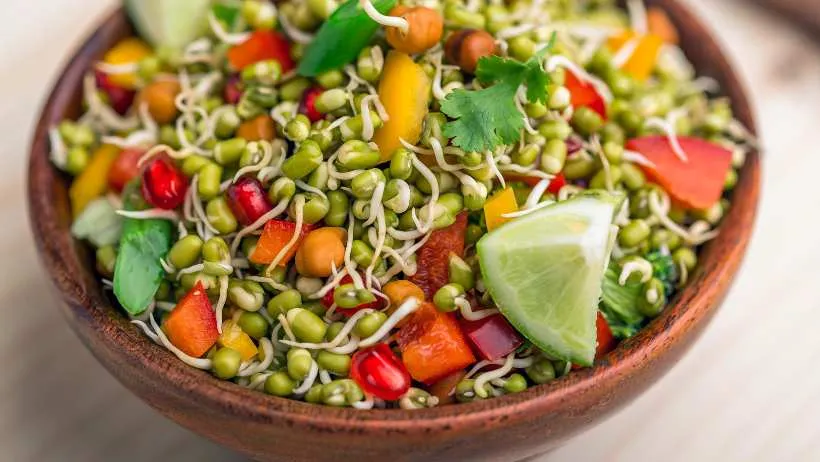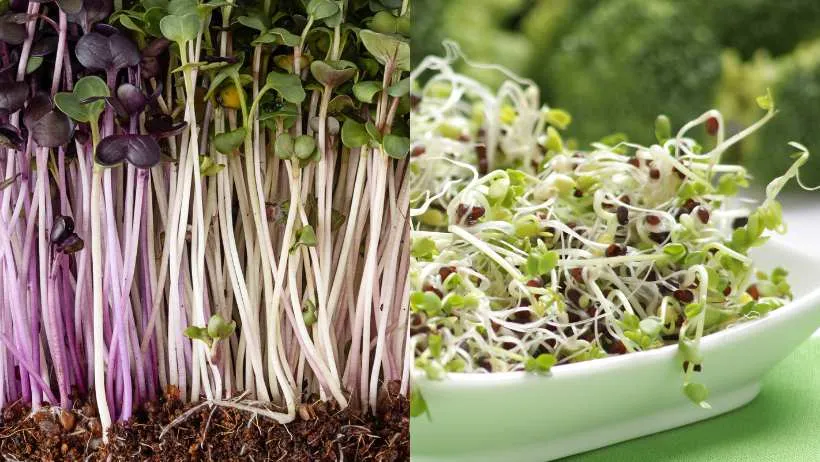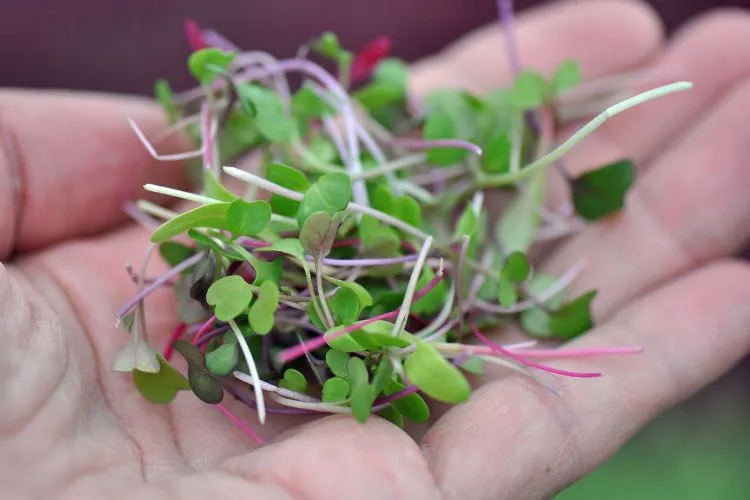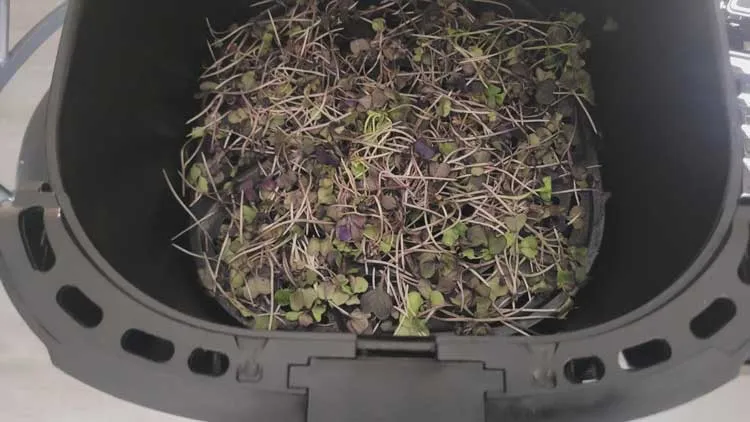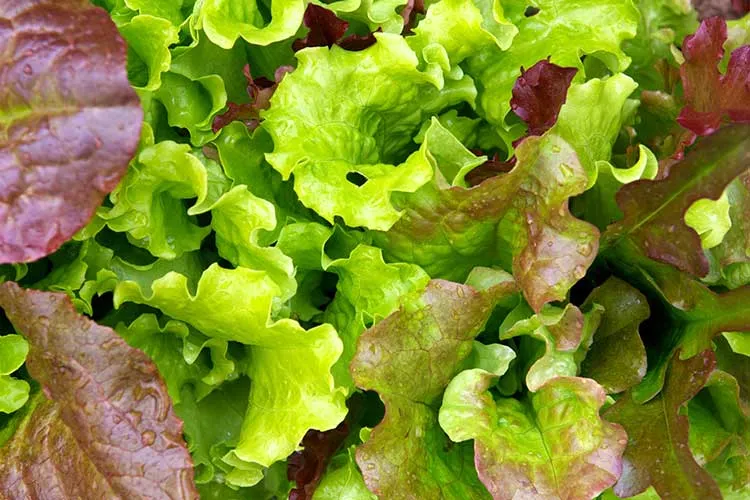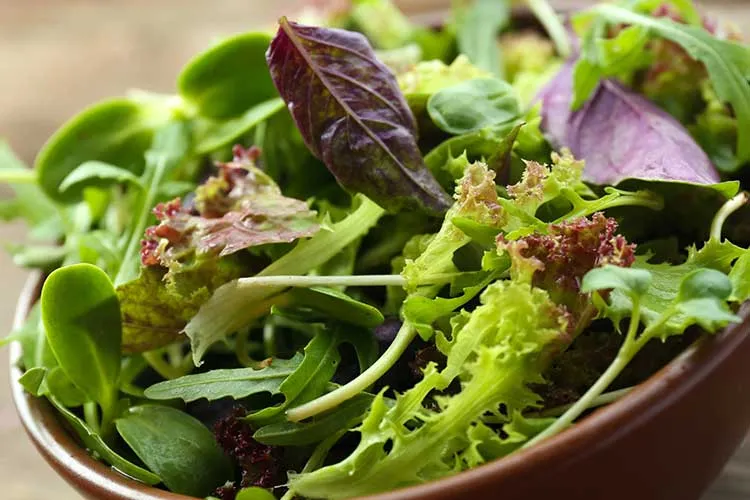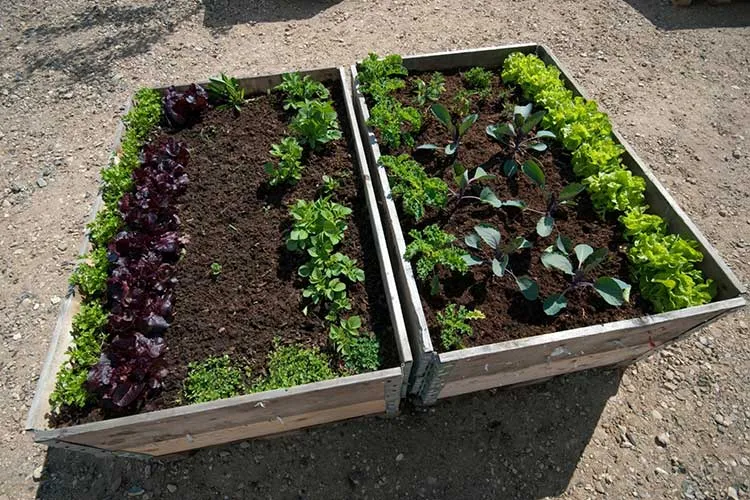If you’re looking for an easy way to boost your protein intake without relying on meat or processed powders, high-protein sprouts are the answer. Sprouts like soybeans, chickpeas, and lentils pack 8-13 grams of protein per cup, making them a powerhouse for plant-based nutrition. They also contain essential amino acids, fiber, and vitamins that enhance digestion and nutrient absorption.
Unlike store-bought protein sources, sprouts are fresh, free of additives, and take just a few days to grow at home. Plus, they are far cheaper than protein supplements. This guide will show you the best high-protein sprouts to grow, their exact protein content, and how to sprout them safely. Get ready to transform your diet with homegrown, nutrient-dense sprouts.
Why Eat Sprouted Foods?
Sprouted foods are packed with nutrients that become more bioavailable during sprouting. When seeds, beans, or grains begin to germinate, their protein content increases while carbohydrates break down, making them easier to digest.
This process also enhances the availability of essential amino acids, vitamins, and minerals, improving overall nutritional value. Sprouted foods are especially beneficial for those looking to boost their protein intake without consuming excessive calories or processed foods.
Beyond protein, sprouting makes digestion smoother by reducing compounds that can cause bloating or discomfort. Raw beans and grains contain anti-nutrients like phytic acid and lectins, which can interfere with absorbing key minerals like iron, calcium, and zinc.
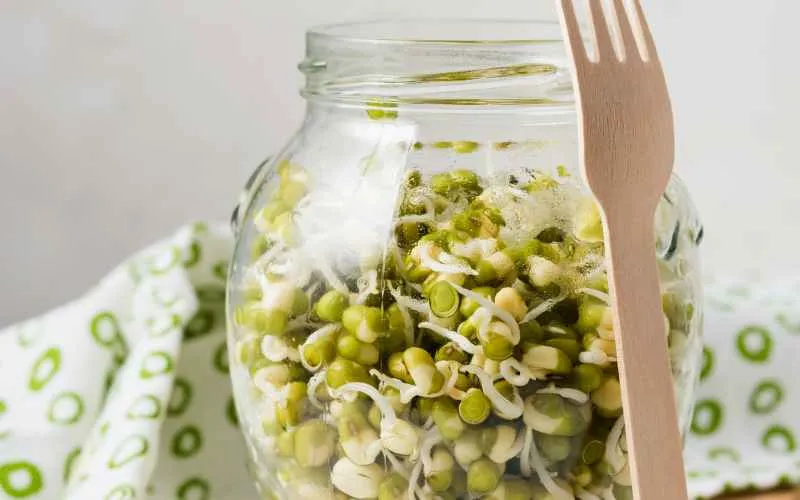
Sprouting helps break down these compounds, allowing your body to absorb nutrients more efficiently. Additionally, sprouted foods have higher enzyme activity, which aids digestion and nutrient breakdown.
Other health benefits include improved gut health and better blood sugar control. Sprouts are fiber-rich, supporting a healthy digestive system and promoting stable blood sugar levels.
Many varieties also contain antioxidants, which help protect cells from damage and reduce inflammation. Since sprouting increases folate, vitamin C, and B vitamins, these tiny greens offer a nutritional boost that benefits overall well-being. If you’re new to growing your own, check out The Best Sprouts to Grow for guidance on which varieties are easiest.
Are Raw Sprouts Safe?
Because sprouts grow in warm, humid conditions, they can sometimes become a breeding ground for harmful bacteria like Salmonella and E. coli. These bacteria can cause foodborne illness, leading to symptoms like stomach cramps, diarrhea, and nausea. People with weakened immune systems, pregnant women, young children, and older adults should be extra cautious when eating raw sprouts.
To minimize the risk, proper sprouting techniques are essential. Always start with high-quality, organic seeds labeled for sprouting. Before soaking, rinse seeds thoroughly under running water. Sterilizing seeds by soaking them in a diluted hydrogen peroxide or vinegar solution can further reduce bacteria. Use clean jars or sprouting trays, and rinse sprouts with fresh water at least twice a day to prevent bacterial growth. Good air circulation is also important—avoid leaving sprouts in standing water. If your sprouts develop discoloration, you may find this guide on why sprouts turn yellow helpful.
Proper storage helps maintain freshness and safety. Store fully grown sprouts in a dry container in the refrigerator and eat them within a few days. Cooking sprouts by lightly steaming or stir-frying can further reduce the risk of contamination while preserving most of their nutrients. You can confidently enjoy sprouts’ health benefits by following these best practices.
7 High-Protein Sprouts You Can Grow at Home
Kidney Bean Sprouts
Kidney bean sprouts pack a powerful protein punch, offering around 8-10 grams per cup. Their slightly nutty flavor and crisp texture make them a great addition to salads, grain bowls, and stir-fries. However, raw kidney bean sprouts contain lectins, which can be toxic in large amounts. Always cook them lightly by steaming or boiling them before consumption to make them safe to eat.
Lentil Sprouts
Lentil sprouts are one of the easiest and quickest legumes to sprout, often ready within 2-3 days. They provide about 9 grams of protein per cup, along with iron, folate, and fiber—their mild, slightly peppery taste pairs well with soups, curries, and wraps. You can eat them raw, but steaming them briefly enhances their digestibility without losing too many nutrients.
Pea Sprouts
Pea sprouts, also called pea shoots, have a fresh, sweet flavor and contain around 7-9 grams of protein per cup. They grow well in soil or water and are commonly used in salads, sandwiches, and Asian-inspired dishes. Their tender leaves and stems boost vitamin C, A, and iron. Harvest them at 3-5 inches tall for the best taste and texture.
Chickpea Sprouts
Chickpea sprouts, or garbanzo bean sprouts, are a protein-dense option, containing approximately 10-11 grams of protein per cup. They have a slightly nutty taste and a firm texture, making them perfect for hummus, stir-fries, and grain bowls. While chickpea sprouts can be eaten raw, lightly cooking them enhances their digestibility and reduces potential bloating.
Mung Bean Sprouts
Mung bean sprouts are most commonly used, especially in Asian cuisine. They offer about 8 grams of protein per cup and contain antioxidants and fiber. Their crunchy texture and mild flavor make them ideal for stir-fries, soups, and spring rolls. These sprouts grow quickly, usually within 3-5 days, and should be kept in a cool place to prevent spoilage. If you’re curious about other nutritious sprouts, check out this comparison of sprouts and microgreens.
Soybean Sprouts
Soybean sprouts are among the highest-protein sprouts, containing around 12-13 grams per cup. They have a slightly nutty, earthy taste and are a staple in Korean and Chinese cooking. These sprouts require more attention than others, as they need regular rinsing and a well-ventilated environment to prevent spoilage. Cooking them is recommended to neutralize anti-nutrients and improve digestion.
Adzuki Bean Sprouts
Adzuki bean sprouts have a mildly sweet flavor and contain about 9 grams of protein per cup. They are packed with fiber, folate, and essential minerals, making them a nutritious addition to salads, rice dishes, and soups. These sprouts take about 4-5 days to grow and require consistent rinsing to prevent mold. Light cooking enhances their digestibility while maintaining their nutritional value.
Which Sprout Has the Highest Protein?

Among the various sprouts, soybean sprouts are the highest in protein, offering around 12-13 grams per cup. This makes them an excellent choice for those looking to increase their plant-based protein intake. Soybean sprouts also contain essential amino acids, making them a valuable source of complete protein. While soybean sprouts are highly nutritious, they are best cooked to reduce antinutrients and improve digestion.
Chickpea and kidney bean sprouts follow closely, each providing 10-11 grams of protein per cup. Lentil, adzuki bean, and mung bean sprouts also offer a solid protein boost, ranging between 8-9 grams per cup. Pea sprouts, though slightly lower in protein at around 7-9 grams per cup, provide additional vitamins and minerals that contribute to overall health. If you’re looking for a different variety, consider trying cabbage sprouts, which provide a unique taste and nutritional profile.
Sprouting Instructions
Growing sprouts at home is simple and requires minimal equipment. Start with high-quality, organic seeds or beans labeled for sprouting. The basic method involves soaking, rinsing, and allowing the seeds to germinate in a controlled environment. One of the easiest tools is a glass jar with a breathable cover, such as cheesecloth secured with a rubber band. Alternatively, a sprouting tray or container with drainage holes works well for larger batches.
Step-by-Step Guide to Sprouting
- Soak the Seeds – Place ¼ to ½ cup of seeds or beans in a clean jar. Fill the jar with enough water to submerge them, about three times their volume fully. Let them soak for 6-12 hours, depending on the type. Larger beans like chickpeas and kidney beans need a longer soak, while smaller ones like lentils and mung beans require less time.
- Drain and Rinse – After soaking, drain the water using a fine-mesh strainer or the cheesecloth covering the jar. Rinse the seeds with fresh water and drain again. This step is crucial to preventing mold and bacterial growth.
- Sprouting Phase – Keep the jar tilted upside down at an angle in a dish rack or a well-ventilated area. This allows excess moisture to drain while still keeping the seeds moist. Rinse and drain the sprouts 2-3 times per day.
- Growing Time – Different sprouts have varying timelines:
- Mung beans: 3-5 days
- Lentils: 2-3 days
- Chickpeas: 3-4 days
- Pea shoots: 7-10 days (if growing as microgreens)
- Soybeans: 4-5 days
- Kidney beans: 4-6 days (must be cooked before eating)
- Adzuki beans: 4-5 days
- Harvesting – Once sprouts reach the desired length (usually 1-2 inches), give them a final rinse and drain well. If using a sprouting tray, gently shake off any excess water.
Keep sprouts in a cool, shaded area with good airflow for the best results. Avoid direct sunlight, which can dry them out or cause overheating. Once harvested, store them in a sealed container in the refrigerator and use them within a few days for peak freshness and nutrition.
Best Growing Conditions for Protein-Rich Greens
Sprouts thrive in specific conditions that encourage healthy growth while preventing mold and bacterial contamination. Temperature, humidity, and airflow all play a role in successful sprouting. Most sprouts grow best in a temperature range of 65-75°F (18-24°C). If temperatures are too high, sprouts may develop bacteria quickly. If too low, growth slows down, and some seeds may fail to germinate.
Light exposure depends on the type of sprout. Most bean and legume sprouts, like lentils, mung beans, and chickpeas, do not need light and grow best in a dark or shaded environment. However, pea shoots and other leafy sprouts benefit from indirect sunlight once they develop small leaves, which enhances their chlorophyll content.
Humidity control is essential. Sprouts should stay moist but not overly wet. Excess water can lead to mold or rot, so proper drainage is crucial. Rinsing sprouts at least twice daily with clean water helps maintain hydration while washing away bacteria. Good airflow prevents excess moisture buildup—keeping sprouts in a well-ventilated area or using a mesh lid on a jar helps reduce the risk of spoilage.
For the best results, use clean, filtered water, and avoid placing sprouting jars or trays near heat sources like stoves or direct sunlight. With the right conditions, your sprouts will grow quickly and stay fresh for consumption.
Harvesting and Storage Tips for Maximum Nutritional Value
Knowing when to harvest sprouts ensures the best taste and nutrition. Most sprouts are ready to eat when they reach 1-2 inches long, typically taking 2-5 days, depending on the type. Pea shoots and microgreens take longer, usually around 7-10 days. The best way to check for readiness is to taste a small amount—if they have a fresh, crisp texture and mild flavor, they are good to go.
After harvesting, rinse the sprouts thoroughly and drain any excess water. Excess moisture can cause them to spoil faster, so spread them out on a clean towel or paper towel to dry for about 30 minutes before storing them. Place the sprouts in a sealed container or a resealable bag lined with a dry paper towel to absorb moisture for storage. For the best quality, keep them in the refrigerator at 35-40°F (1-4°C) and consume them within 3-5 days.
Avoid packing sprouts too tightly to extend freshness, as this can cause them to become soggy. If sprouts develop a slimy texture or an off smell, discard them immediately. Lightly blanching and freezing sprouts is an option for longer storage, but fresh consumption provides the most nutrients.
Can You Store Sprouts in Water?
Storing sprouts in water is not recommended, as prolonged exposure to moisture promotes bacterial growth and spoilage. Instead, keep them dry and refrigerated in a breathable container. A glass jar or a perforated plastic bag lined with paper towels helps maintain freshness. Rinsing sprouts before storage introduces excess moisture, so ensure they are well-drained before refrigerating.
Consuming sprouts within a few days ensures optimal texture and flavor. If water is used for short-term hydration, it should be changed frequently to prevent microbial buildup. Maintaining a cool storage environment around 2–4°C (35–40°F) helps extend shelf life. Avoid sealing sprouts in airtight containers without ventilation, as trapped moisture accelerates deterioration. Proper handling minimizes food safety concerns and preserves quality.
Ways to Use Protein-Rich Sprouts in Your Diet
Sprouts add a fresh, crunchy texture and protein boost to various meals. One of the easiest ways to enjoy them is by tossing them into salads—mung bean, lentil, and pea sprouts work especially well for adding texture and nutrients. For a heartier option, mix chickpea or soybean sprouts into grain bowls with quinoa, rice, or roasted vegetables.
Stir fries are another great way to incorporate sprouts. Lightly sauté mung bean or soybean sprouts with garlic, ginger, and soy sauce for a quick and flavorful side dish. In soups, lentils, and adzuki bean sprouts add extra protein and fiber without overpowering the flavor. Stir them in just before serving to maintain their crispness.
Add lentil or chickpea sprouts to an omelet or scrambled eggs for a protein-packed breakfast. They blend well with cheese, tomatoes, and herbs. You can also use them in sandwiches and wraps, where their crunch contrasts nicely with soft ingredients like avocado or hummus.
If you enjoy smoothies, add a handful of pea or sunflower sprouts for a mild, slightly sweet boost of nutrients. Blending them with fruits, yogurt, and seeds creates a well-rounded, protein-rich drink. No matter how you use them, sprouts are a simple way to increase your plant-based protein intake.
Easiest Microgreens and Sprouts to Grow for Nutrition
If you’re looking for quick-growing, nutrient-dense options, some microgreens and sprouts are easier to grow than others. Mung bean sprouts are among the fastest, often ready in 3-5 days, requiring only regular rinsing. Lentil and chickpea sprouts are also simple; they need just a jar, water, and 2-4 days to sprout.
Peashoots are a great choice for microgreens. They offer a mild, sweet flavor and grow within 7-10 days. Sunflower microgreens are another easy option. They are packed with protein and ready to harvest in 7-12 days. Radish microgreens grow quickly in soil or a tray, adding a peppery kick to meals while providing vitamins and antioxidants.
Both sprouts and microgreens require minimal space and effort, making them ideal for beginners. Whether you prefer the crunch of sprouts or the leafy texture of microgreens, these options provide an easy way to boost nutrition at home.

